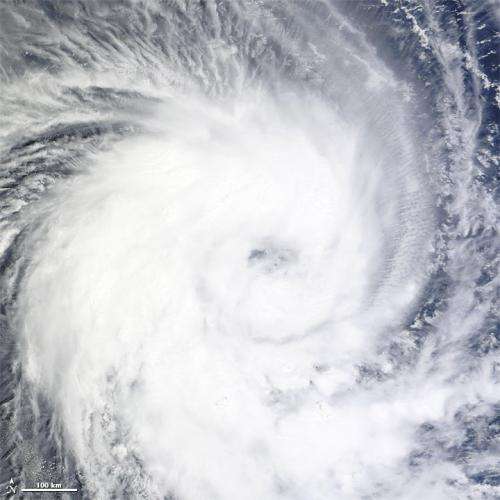Tropical cyclones in the Arabian Sea have intensified due to earlier monsoon onset

The tropical cyclones in the Arabian Sea during the pre-monsoon season (May – June) have intensified since 1997 compared to 1979 - 1997. This has been attributed to decreased vertical wind shear due to the dimming effects of increased anthropogenic black carbon and sulfate emissions in the region. The decrease in vertical wind shear, however, is not the result of these emissions, but due to a 15-day on average earlier occurrence of tropical cyclones, according to a study spearheaded by Bin Wang at the International Pacific Research Center, University of Hawaii at Manoa and published in "Brief Communications Arising" in the September 20, 2012, issue of Nature.
"About 90% of the pre-monsoon tropical cyclones occur during a small widow in late spring. The mean date during which the cyclones with maximum intensity occur has advanced from June 8 in the earlier period to May 24 in the second period," explains Bin Wang. "This advance has been accompanied by a significant decrease in vertical wind shear, which leads to tropical cyclone intensification, because large vertical wind shear is most destructive to intensification."
"The ultimate reason for this earlier occurrence of storms and their intensification is the tendency we have noticed for the southwesterly monsoon to begin earlier in recent years," says Wang. "This earlier monsoon onset is related to the greater warming of the Asian landmass than the ocean and thus an increased temperature ocean–land contrast over the last years. This greater temperature difference may strengthen the monsoon and create more favorable conditions for the formation of tropical cyclones."
"All the changes that we see in the pre-monsoon storms and the earlier monsoon onset since the late 90s, can be the result either of natural variability, namely the Interdecadal Pacific Oscillation, or of warming effects due to greater greenhouse gas emissions, but not the effect of increased aerosols. Only time and more research will tell."
More information: Bin Wang, Shibin Xu, and Liguang Wu: Intensified Arabian Sea tropical storms: Brief Communications Arising, Nature, Sept. 20, 2012, 489.
Journal information: Nature
Provided by University of Hawaii at Manoa

















